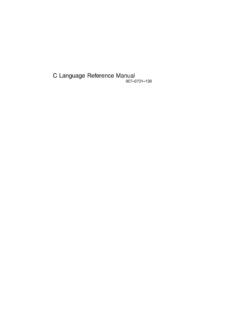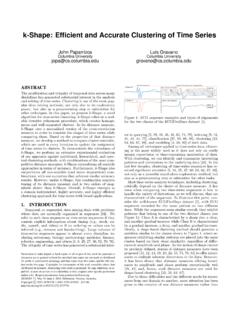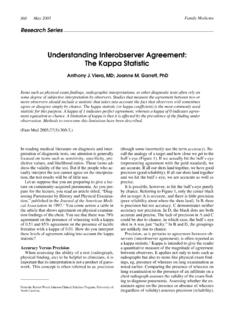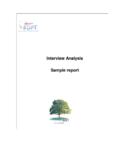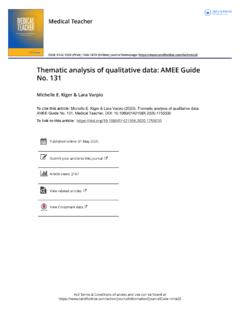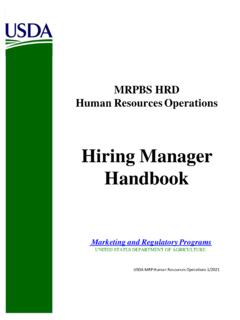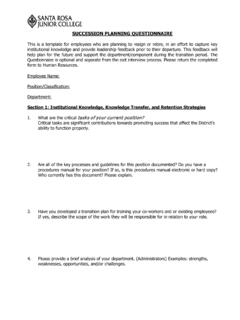Transcription of What is textual analysis? - Columbia University
1 1 What is textual analysis ?What is textual analysis ? textual analysis is a way for researchers to gather information abouthow other human beings make sense of the world. It is a method-ology a data-gathering process for those researchers who want tounderstand the ways in which members of various cultures andsubcultures make sense of who they are, and of how they t into theworld in which they live. textual analysis is useful for researchersworking in cultural studies, media studies, in mass communication,and perhaps even in sociology and 's open with a straightforward descriptionWhat is textual analysis ?When we perform textual analysis on a text, we make an educatedguess at some of the most likely interpretations that might be madeof that interpret texts ( lms, television programmes, magazines, adver-tisements, clothes, graf ti, and so on) in order to try and obtain asense of the ways in which, in particular cultures at particular times,people make sense of the world around them.
2 And, importantly, byseeing the variety of ways in which it is possible to interpret reality,we also understand our own cultures better because we can start to seethe limitations and advantages of our own sense-making that the only way to study texts?Of course, I'm trying to make things simple here, and nothing isreally that simple. This book only introduces one version of textualanalysis. Academics who do ` textual analysis ' actually practise a hugerange of methodologies many of which are mutually contradictoryand incompatible (for a sense of this range, see Allen, 1992). Thisbook explains a form of ` textual analysis ' whereby we attempt tounderstand the likely interpretations of texts made by people whoconsume them. This is not the only `correct' methodology forgathering information about texts.
3 Other approaches can also pro-duce useful information: no approach tells us the `truth' about aculture. It's important to realize that different methodologies willproduce different kinds of information even if they are used foranalysing similar example, suppose you were interested in what the responses oftelevision viewers to an imported American programme (like the1980s' soap operaDynasty) have to tell us about how audiences makesense of the nation in which they live. You could try to nd out thisinformation in a number of ways. Professor Jostein Gripsrud includestwo of these in his bookThe Dynasty Years(1995). On the one hand,Gripsrud draws on large-scale, numerical surveys aboutDynastyviewers. He uses ratings information, for example, to tell us howmany people watched the programme nding out that in December1988, 63 per cent of the women and 57 per cent of the men surveyedin his home country of Norway had seen at least one episode ofDynastyin the season that had just run.
4 This is useful information but it doesn't tell us anything about thewaysin which viewers watchthis programme. It doesn't tell us how they interpreted it, what theythought it was about, what relationship they thought it had to theirown lives (Gripsrud, 1995: 113). Gripsrud goes on to investigate otherissues in this large-scale survey, asking viewers what they dislikedabout the programme. He points out that less than 25 per cent of thepeople surveyed thought that the programme was `unrealistic', forexample. He uses this evidence to suggest that the viewers of theprogramme are likely to be relating it to their own life in some way(ibid.: 116).But this methodology still doesn't produce any information abouthowthese viewers might have been watchingDynasty. In order toproduce large-scale, generalizable information, it is necessary to turnpeople into numbers.
5 There's no other way to handle the infor-mation. So Gripsrud does this. He produces categories, and he tspeople into them but this information doesn't give us any sense ofhow audience members actually use a programme. To produce thatkind of information would require a different kind of approach,different kinds of questions a quite different ANALYSISG ripsrud quotes an interview with one viewer ofDynasty. Theamount of detail and speci city about this one viewer is amazingcompared with her status in the of cial ratings as a single unit:[ThisDynastyfan] is an intelligent bank employee in her thirties .. herhusband has a bit more education but .. far less intelligence ..her husband regularly beats her and humiliates her in various otherways .. When telling the interviewer about her sexual misery, the wifeon her own initiative started talking aboutDynasty`You know, I'm quiteromantic, you see.
6 What I like to watch on television that I'd like some tenderness and compassion.' (ibid.: 156)In the methodology of large-scale surveys, processed as numbers,such a viewer becomes, perhaps, per cent of the people who don'tthink thatDynastyis `unrealistic'. Using that methodology, thesimilarity of her position to that of other viewers is emphasized. Butin an interview like this, it is theuniquenessof her situation thatbecomes obvious the individual ways in which her own life experi-ence informs the use she makes of this television programme, andthe interpretations she produces of two different methodologies produce quite different picturesof television viewers and their interpretative practices. This is becausethe questions that you ask have an effect on the information that you nd. Different methodologies produce different kinds of is an important point.
7 There isn't one true answer to thequestion of how viewers watch this television programme. Dependingon how you gather your information, you will nd different you can't just t these different pieces of information togetherlike a jigsaw to produce the `truth' about how viewers can know in detail how a small number of people watch aprogramme; or you can know in a more abstract way how lots ofpeople watch. But you can't really know both at once. If we simplyinterviewed every one of the millions of NorwegianDynastyviewersin this way, we still wouldn't end up with a perfectly accurate pictureof how theyreallyinterpret this text. Quite apart from the incon-ceivable cost of such a project, at some point it would be necessary toboil down the information, to look for patterns, to reduce viewers'experiences to the things that they have in common, in order toproduce an account that wasn't twenty million words long.
8 As soon asthe information is boiled down into categories, it presents a differenttype of picture to that which emerges from the individual interview but no less of a true one. Different methodologies produce differentkinds of information they might not even be IS textual analysis ?3 What is a text?If textual analysis involves analysing texts, then what exactly is atext? Answer: whenever we produce aninterpretationof something'smeaning a book, television programme, lm, magazine, T-shirt orkilt, piece of furniture or ornament we treat it as a text. A text issomething that we make meaning why not just say `book' or `film' or whatever?We use the word `text' because it has particular implications. Thereare no two exact synonyms in the English language words alwayshave slightly different meanings and connotations.
9 The word `text'has post-structuralist implications for thinking about the productionof that would mean, exactly ..?Different cultures make sense of the world in very different Books International publishes a series of books to helptravellers visiting other countries. The series is called `Culture Shock'(Craig, 1979; Hur and Hur, 1993; Roces and Roces, 1985). The booksare not just tourist guides: they are attempts to help the visitor astheir title suggests overcome `culture shock': the experience ofvisiting another culture that's different not only in language, but inits whole way of making sense of the world. In their book on thePhilippines, Alfredo and Grace Roces use this example to explain howdifferent another culture's ways of making sense of the world can be:After two years in the Philippines, Albert G Bradford, an AmericanPeace Corps Volunteer wrote to one of his colleagues: `I remember howquickly I discovered that people didn't understand me.
10 The simplestthings to me seemed not familiar to them at all. I tried to explain, butthe further I got into an explanation, the sillier I looked; suddenly I feltundermined: the most basic premises, values and understandings wereof no help to understandings and ways of doing andseeing things just didn'texisteven. There was a big gap. (Roces andRoces, 1985: 83, emphasis in original)Studying other cultures makes clear that, at many levels, the ways ofmaking sense of the world employed can be quite different: `The4 textual ANALYSISW estern visitor [to the Philippines] nds he is talking the samelanguage, but not communicating at all .. he [sic] is in an entirelydifferent world' (ibid.: 1). These differences operate at a variety oflevels, from the more super cial, to those which challenge our veryfoundations for thinking about what reality is and how it in value judgementsAt the simplest level, cultures may ascribe different levels of value tothings around them.
